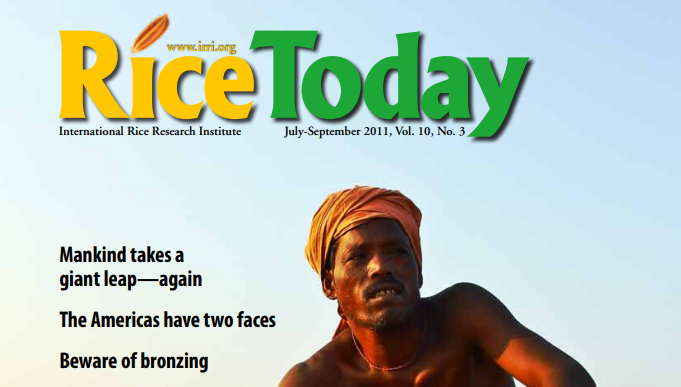I arrived in Beldangi for the first time in 2008. Since then, I have been conducting research on the situation of Bhutanese refugees. To complete my recent book, The Ecosystem of Exile Politics: Why Proximity and Precarity Matter for Bhutan’s Homeland Activists, over 16 years I conducted nearly 100 interviews and read (I believe) read every English-language book about the history, politics and social situation that shaped the Bhutanese refugee experience.[1] All have been valuable, but my exposure to Govinda Rizal – his book, some additional articles, and one very informative and long-ranging interview with him in person – has profoundly shaped my understanding of Bhutan’s refugee history. In all of these, Govinda Rizal’s words have had a lasting influence.
I first heard of Govinda Rizal when Indra Adhikari told me about his book, A Pardesi in Paradise, published in 2018[2]. Within days, I had filled the margins with exclamation marks and the pages with Post-It notes to mark where I had gained new insights. This book allowed me to develop a powerful sense of the on-the-ground experience for the Lhotshampas, whom Govinda called Bhutanese. Of course I had read much about these experiences before, and I had spoken to many refugees themselves. But Govinda’s story is remarkable in its depth and breadth. He starts with narrating his days as a young child, before going through the years of Bhutan’s problematic policies that alienated, harmed, and expelled one-sixth of the country’s population. He describes his personal experiences after leaving Bhutan, and the most important moments of the opposition movement, before explaining his later work and education in Japan, Nepal, and elsewhere.. His are words with endurance. These words are part of his legacy.
In 2019, I had the opportunity to return to Nepal to conduct several interviews for my book. There, I met Govinda in person. He was generous with his time. He suggested other individuals to interview, commented on my ideas about homeland activism, and answered my questions about his book. Even though his book has so much embedded knowledge, and despite being very well-read on the issue, I still sought some explanations and context, which he affably offered. Thereafter, I remained in email correspondence with him, particularly as we made efforts to support the work of the Global Campaign for the Release of Political Prisoners in Bhutan. Govinda sent additional pieces he had written, including a trenchant analysis of Bhutan’s foreign policy approaches as a landlocked country between two giants.[3] From these materials I learned much about how the remaining refugees in camps in Nepal were managing in the post-resettlement phase.
Here, I’d like to point to several insights that I have learned specifically from Govinda and his writings.
First, as a migration scholar and advocate, I often encounter people who claim that refugees are ‘lucky’ to have found another place to move to, and that, once settled there, their focus is purely oriented toward the host country, so much so that their memories of home no longer matter. But Govinda’s book shows that even in exile, memories of home are sharp and important. Govinda wrote of the simple pleasures of life in Bhutan, including picnics, school shenanigans, going to the cinema, singing songs while farming, and traditional dances.. In Govinda’s words, ‘[I] grew up there studying the sun, the moon, stars, their positions in the risings and settings. I learned about the time of the day and seasons of the year from everything that I saw around. My horizon was limited, but everything existed there’ (p. 13).
Memories from those years in Bhutan were also bitter. Along with the joys of childhood, Govinda aptly describes the impending restrictions that he and his compatriots felt. In Chapter 4 (“Abrogation of Citizenship”), Govinda shows how it felt personally for Lhotshampas to: have Nepali books burned; be forced to wear Gho and Kira; have land confiscated; have schools in the South close arbitrarily; witness the falsity of the Green Belt policy; experience the pain of the Census; and feel discriminated against by the racialised policies enacted by the government. The chapter allowed me to sympathise with the sense of strangulation felt by the Lhotshampa community in Bhutan, even by those who desperately wanted to remain, who loved Bhutan, and who – like Govinda’s family – were so deeply devoted to the King that they put Tika on his portrait (page 48).
Second, Govinda wrote powerfully about what it meant to be forced out. He wrote movingly about the last time he saw his Amai, and about the torture and death of a dear friend and classmate, Khadka Bahadur Magar, whose family was tricked into signing forms that made it seem as though he was already sick (pp. 102-103). He describes the slow impoverishment of his family in Lodrai, with no income and no ability to plow the fields. When his family left, he describes how the family plot was taken from him, and he was made landless and homeless. In one of the most emotive moments of the book, Govinda describes managing to cross back into Bhutan during the AMCC marches. I quote at length here, because Govinda’s words demonstrate the tension and hope that so many young Bhutanese must have felt about exile and the potential promise of return:
We entered Bhutan at 10:35 in the morning of August 15, 1996. Fifty marchers: 36 men and 14 ladies walked through Phuntsholing gate with white vest[s] reading “Appeal March to Bhutan” in blue letters. Once inside the gate, we reduced our pace and walked normally…. The objective of our march was to walk to Thimphu, appeal to the Monarch W4, and present the proposal of national reconciliation for an amicable solution to the ongoing problems…. Very soon we were in front of a crowd of more than 200 people. A crowd of Drukpa soldiers and officers in plain clothes came behind as the backup force. They human shielded the road going to Thimphu and began to approach towards us gradually studying our moves.… Our only request was to take us to the Monarch. Only the Monarch can solve our problems; we neither had feelings nor sinister intention towards anyone…. In about two hours, they brought three old buses to pack us. We wanted to go to Thimphu (North) but the buses were kept facing south towards Jaigoan, India. The soldiers in the plain clothes caught the most active leaders and pushed them forcibly into the buses. We, the younger marchers resisted without using force. They pulled the marchers into three buses and drove to Jaigoan…. I had [had] a high expectation that they would take us seriously. They did not. I felt cheated and defeated…. A pain erupted inside my [cheekbones], my voice stopped, and tears flowed profusely. I cried. After many years, I cried loud and without feeling ashamed. For the first time, I felt the pain of losing a nation. (pp. 288 -291)
Until that moment, Govinda truly believed that he would be able to return to Bhutan. After all, he knew that he had no violent or anti-national thoughts. Despite the treatment that he and other Lhotshampas had experienced, he simply wanted to demonstrate that he, and others like him, were eager to be a part of the Bhutan polity. Of the many sadnesses about Govinda’s death, one is that he was never able to return to Bhutan in any form to demonstrate this.
Third, Govinda’s story – through both his book and my interview with him – helps to illustrate a phenomenon that scholars of refugees (and refugees themselves!) have always known: that being ‘forced’ to leave one’s home is not as simple as, say, a soldier holding a gun to one’s head. Indeed, in the case of Govinda’s family, a series of indignities, threats, deprivations, and anxieties all converged to make Govinda realise that it was impossible for him to stay in Bhutan. In high school in Thimphu, he sat silently as the Lhotshampa people were mocked. At the BPP office he realised with a shock that he could be targeted simply for being associated with those who had already been labelled as anti-nationals. In his home town he watched as his own father became incapacitated, deeply sad that he could no longer earn a livelihood. Govinda pointed out to me that this was not about his father not having enough material things, but instead it was about him feeling distressed that his dignity had been compromised when he could not support his family and give back to his community.
Finally, Govinda’s story helps us identify patterns that reveal a cautionary tale about the world we live in today. As I write this, Donald Trump has been elected as the President of the United States. One of his platform promises is that he plans to deport all undocumented migrants across the Southern border of the United States. Much to the surprise of many commentators, a significant cohort of citizens of Latin American descent supported Trump, because they believe that they will be protected while “illegal” Latin Americans will be deported. Something similar happened among the Lhotshampas in Bhutan. When the Census was first announced in YEAR, Govinda explained to me, many Lhotshampa citizens of the South supported it, never imagining that they themselves would be targeted. I believe that something similar will happen in the southern United States: if Trump begins mass deportations, American citizens of Latin American descent will be targeted. This form of denationalisation – something with which more than 100,000 Bhutanese refugees are familiar – should be something that no one has to endure.
Early in Pardesi in Paradise, Govinda wrote that he wanted to find the ‘authentic glue’ to tell his stories. To me and many others, that’s exactly what his story has provided – the glue to hold community and ideas together. He is greatly missed.
[1] Banki, S. (2024). The Ecosystem of Exile Politics: Why Proximity and Precarity Matter for Bhutan’s Homeland Activists. Ithaca: Cornell University Press.
[2] Rizal, G. (2018). A Pardesi in Paradise. Kathmandu, Nepal: Discourse Publications.
[3] Rizal, G. (2023). ‘Bhutan’s Foreign Policy and Its Strategic Handling of Big Nations’. In C. D. Bhatta & J. Menge (eds.), Walking among Giants Foreign Policy and Development Strategies of Small and Landlocked Countries. Lalitpur: Friedrich-Ebert-Stiftung, pp. 141-162.
First published in The Bhutan Journal 6(1) – May 2025




